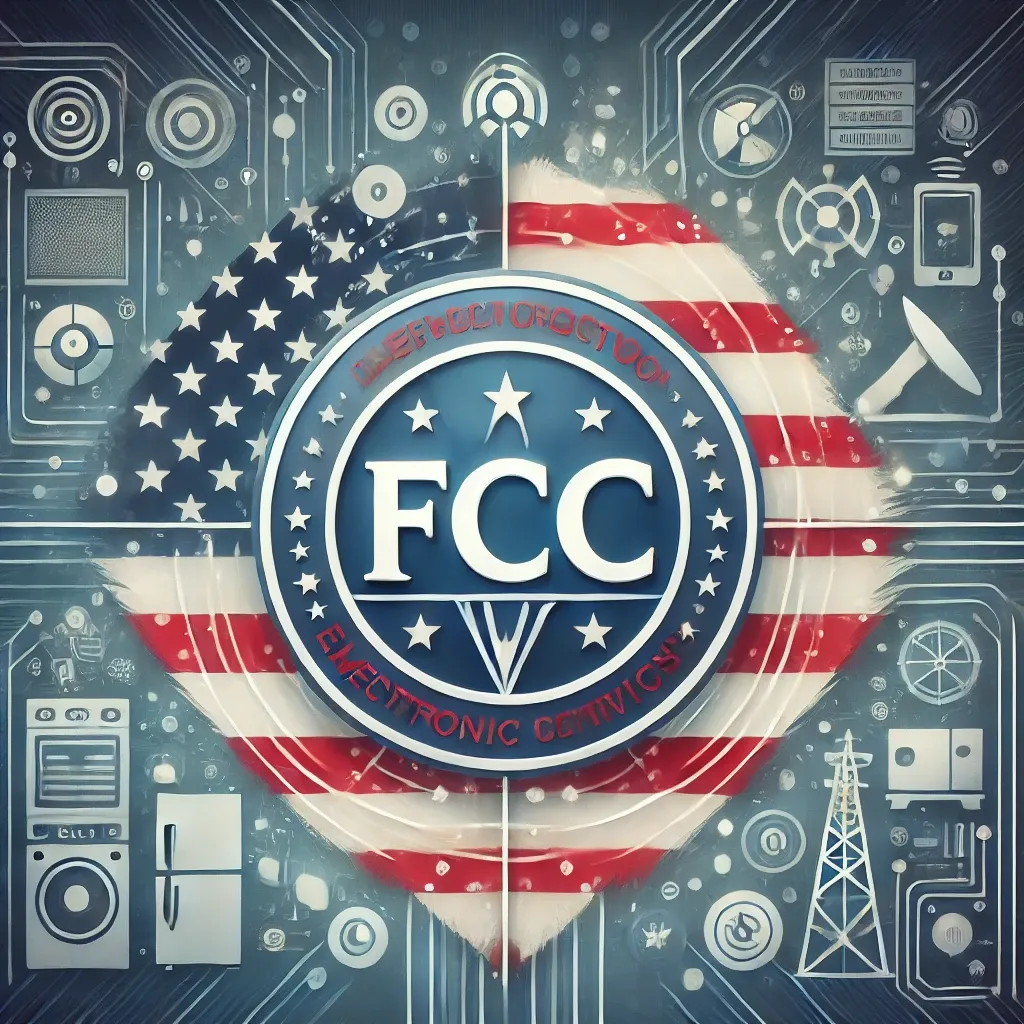If you’re planning to sell electronic devices in the United States, gaining FCC compliance is a critical step to ensure that your products can legally enter the market. Whether you’re manufacturing consumer electronics, IoT devices, or industrial equipment, adhering to FCC regulations is essential to prevent harmful interference with other devices and to protect the integrity of U.S. telecommunications infrastructure.
This comprehensive guide breaks down the FCC certification process, highlights key regulations, and provides valuable tips for manufacturers aiming to streamline the U.S. market entry.
Why is FCC Compliance Important?
The Federal Communications Commission (FCC) governs all devices that emit radio frequencies (RF) to ensure they don’t cause harmful interference. From smart home devices to industrial tools, most products that emit RF energy must meet FCC regulations before they can be marketed or sold in the U.S.
Without proper FCC approval, manufacturers risk fines, delays in market entry, or even product recalls.
Two Key Pathways: Supplier’s Declaration of Conformity (SDoC) and FCC Certification
Supplier’s Declaration of Conformity (SDoC) and FCC Certification are the two primary methods to authorize devices for sale in the U.S. The appropriate path depends on whether your product is an intentional or unintentional radiator of RF energy.
- Supplier’s Declaration of Conformity (SDoC): This method applies to digital devices and other electronics that don’t contain RF transmitters (e.g., personal computers, monitors, and power supplies). Under SDoC, the manufacturer self-declares compliance without submitting an application to the FCC.
- FCC Certification: Devices that intentionally emit radio signals—such as Bluetooth, Wi-Fi devices, or cellular-enabled products—require a more rigorous FCC Certification process. This involves submitting testing results to an FCC-recognized lab and receiving formal approval.
Devices Under FCC Regulation
The FCC’s authority extends to a wide range of electronic products, including:
- Intentional Radiators: Devices designed to send out RF signals as part of their function (e.g., Wi-Fi routers, wireless cameras, and IoT sensors).
- Unintentional Radiators: Devices that don’t deliberately emit RF signals but may produce them as byproducts of their operation (e.g., computers, LED lighting systems).
The Certification Process for IoT Devices
IoT devices fall under FCC Part 15, which addresses both intentional and unintentional radiators. For most IoT equipment, FCC Part 15 Certification is necessary. Here’s how the process typically works:
- Step 1: Testing – IoT devices need to undergo RF testing in an FCC-recognized lab to ensure they meet the required standards.
- Step 2: Submission – The manufacturer submits the results, along with the necessary documentation, to the FCC for approval.
- Step 3: Certification – Once approved, the device receives an FCC ID, which must be displayed on the product.
Labeling and Documentation Requirements
Products authorized under SDoC or Certification must include clear labeling to indicate compliance:
- SDoC Devices: Manufacturers may use the FCC logo to signify compliance, but it’s optional. However, they must provide a compliance statement along with the product, including the name and contact details of the responsible party in the U.S.
- Certified Devices: Must feature a permanent FCC ID label affixed to the device. In cases where the device is too small, the label can be included in the user manual or packaging.
Cybersecurity
Additionally, securing your IoT devices with proper cybersecurity measures is just as important in today’s market. You can read more about the FCC’s cybersecurity labeling program here, which adds another layer of protection to your products.
This comprehensive guide breaks down the FCC certification process, highlights key regulations, and provides valuable tips for manufacturers aiming to streamline U.S. market entry.
Q&A: FCC Compliance Explained
Q1: What’s the difference between SDoC and FCC Certification?
A1: SDoC applies to devices like computer peripherals and digital devices without transmitters. Manufacturers self-declare compliance without filing with the FCC. FCC Certification, on the other hand, is required for products with RF transmitters, and it involves testing by an FCC-accredited lab.
Q2: Does every IoT device need FCC Certification?
A2: Yes, most IoT devices require certification under FCC Part 15, especially if they use wireless communication like Wi-Fi, Bluetooth, or cellular networks.
Q3: Can I use an FCC-accredited lab for SDoC?
A3: Yes, you can use an accredited lab for SDoC if you choose. However, it is not required. The testing facility must still meet FCC standards for accuracy.
Q4: What information must be included in a compliance statement for SDoC?
A4: The statement should include the product’s trade name, model number, and contact information of the responsible party located in the U.S.
Q5: Is it mandatory to use the FCC logo on SDoC devices?
A5: No, the FCC logo is optional for SDoC devices, but it can be a useful indicator of compliance.
Q6: What happens if a product undergoes modifications after receiving FCC Certification?
A6: Any significant changes to the design, circuitry, or components require re-testing and possibly updating the certification and labeling.
Tips for Streamlining FCC Authorization
- Plan Ahead: The certification process can take weeks. Start early to avoid delays in your product launch.
- Use Recognized Labs: For FCC Certification, testing must be done by FCC-recognized laboratories.
- Keep Detailed Records: Proper documentation is essential, and all records must be accessible in case of an FCC audit.
- Consider Modular Approvals: If your device includes certified RF modules, ensure the entire product is compliant with FCC standards.
How IoT Consulting Partners Can Assist You
Navigating the complexities of FCC regulations can be challenging. At IoT Consulting Partners, we help manufacturers through every step of the compliance process—from initial testing to receiving certification. Our expertise ensures your products are ready for the U.S. market quickly and efficiently.


